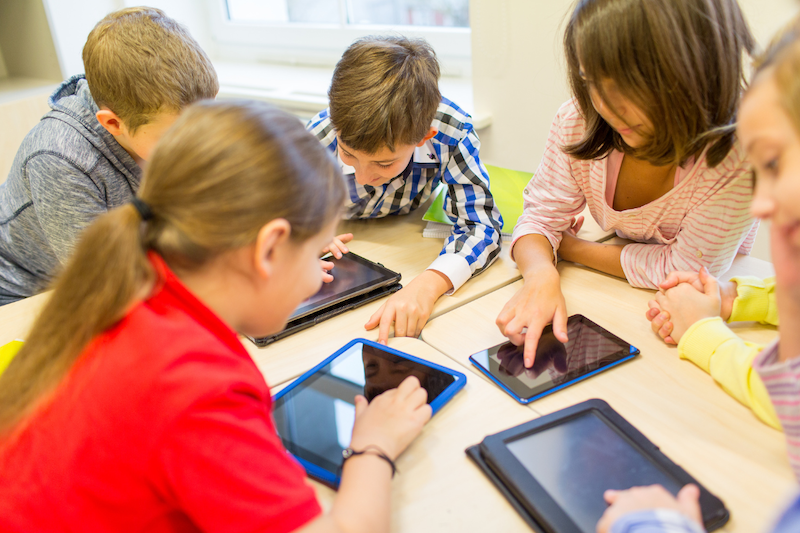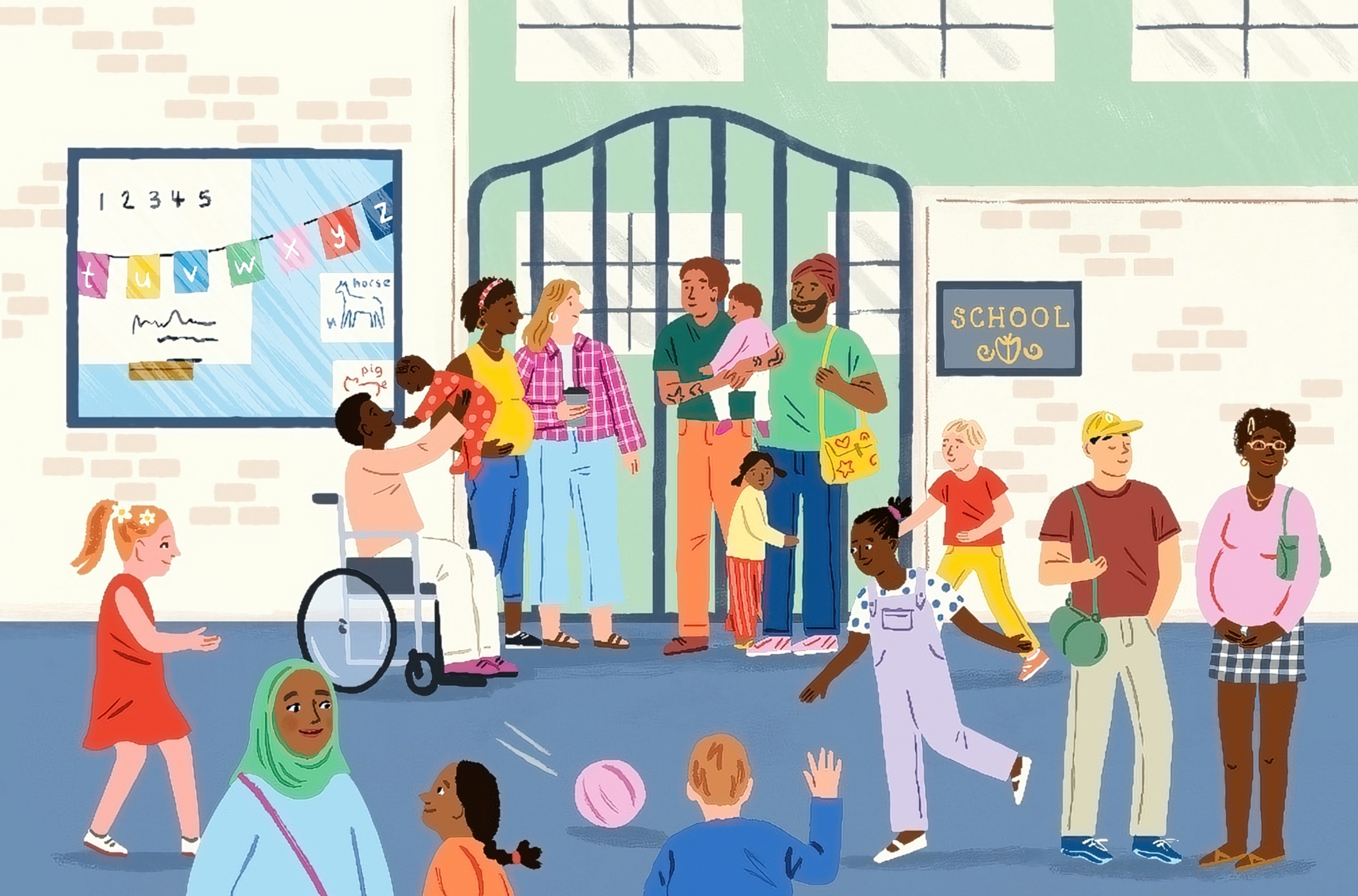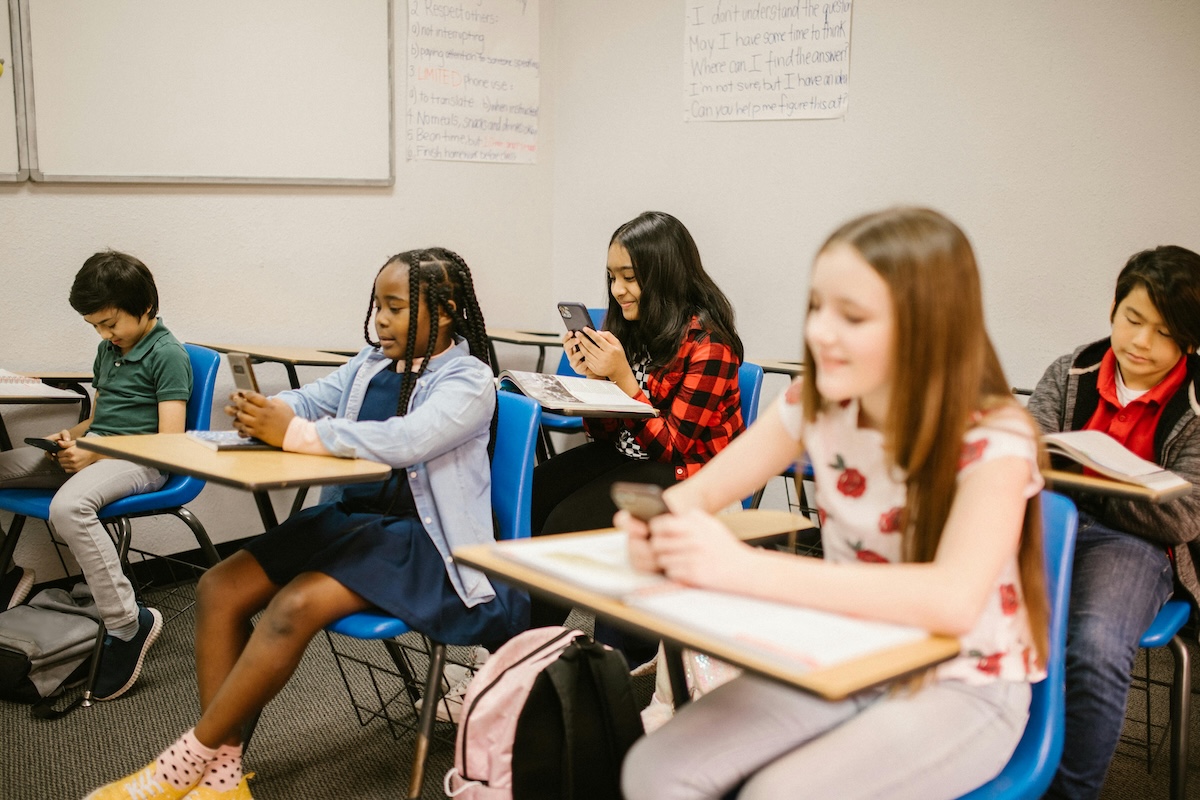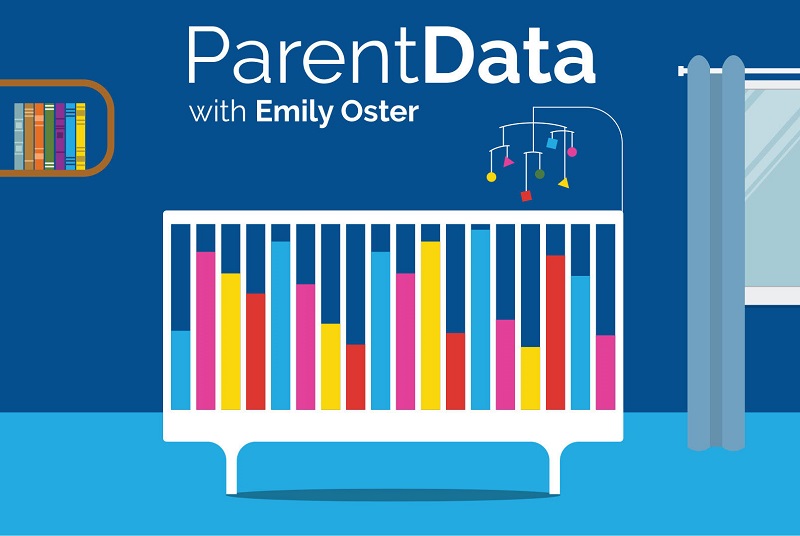“My son’s elementary school has been progressively replacing direct instruction with unsupervised time on tablets using ‘learning’ apps. Is this bad?”
This question — or a form of it — comes to me all the time. I can see why. We spend a lot of time telling parents of small children that screens are bad. And then they arrive at school and somehow … screens are good for learning? This feels confusing and backward.
Making it worse, for many parents, it’s hard to know what is going on in the classroom. Your kid tells you, “I played games all day.” But did they really? Or was that just the most salient aspect of the day? Also, what’s a game? Is it actually math made fun?
Putting all this together, a lot of us want to ask our children’s schools how screens are being used, but it’s hard to know where to start. If you ask the school if technology and screens are used in the classroom, the answer is almost certainly going to be yes — nearly all schools at this point are using some screen technology. Your obvious follow-up is probably “Are they being used effectively?” But that question isn’t specific enough to get you a good answer (and no school will say “no,” anyway).
To engage productively with this, we need to step back and think about what we know about these technologies in the classroom, in the data, and also what we know about learning in general. We can put that together to come up with the right questions to ask our kids’ schools.

What does “educational technology” mean?
“Educational technology” (sometimes called “EdTech”) does not have a single meaning. Generally, though, when researchers look at this, they are considering the use of individual screens — often, tablets — in the classroom as a way to deliver either curricular material or enrichment. The comparison is with paper-based, teacher-led educational approaches.
For children in middle and high school, the use of computers is ubiquitous. In these age groups, “EdTech” would be more likely to refer to the particular programs used (e.g., math programs such as Desmos). Much of the debate in this space (and the debate I’ll be delving into here) focuses on younger ages, especially early elementary school. At these ages, it would be possible to deliver education completely without technology. And yet, in many cases, individual screens are used at least some of the time.
What does the big-picture data on educational technologies say?
Several studies have examined the use of education technology and its impact on learning. A 2024 review identified 18 studies covering a total of over 11,000 children, focusing on the impact of mobile devices (i.e., iPads, mostly) on learning.
The headline finding, which is echoed in many other reviews and papers, is that the use of these technologies has some positive impacts on student learning. Test scores or other achievement measures seem to go up in the groups for which these are introduced. The effects are of moderate size; they are comparable to the impacts of preschool programs or volunteer tutoring and much smaller than, say, the impact of using phonics instruction or teacher quality.
This is an extremely difficult literature to summarize, as the authors of these papers and others note, because “using educational technologies” is not a single activity. For the most part, these studies consider the use of tablets (iPads or similar) on which students are doing some education-based activity.
It should be completely clear to everyone that the way these devices are used matters. Handing everyone an iPad and telling them to take an hour to play Roblox is not going to improve math learning. Carefully matching children with an adaptive math program that gives them problems suited to their level for 20 minutes of math class probably will.
The interventions considered in these papers are mostly of the latter type. That is, researchers are asking whether a well-designed, thoughtfully implemented educational technology intervention could be effective in the classroom. The results tell us that, yes, it can be. They do not necessarily tell us much beyond that; the types of interventions are varied, and there isn’t enough data to really say what kind of implementation is best.
To the extent that we have more specific information, there is strong evidence for technology in math. Adaptive apps have been shown to improve math learning, perhaps because they can support students who are coming in with different abilities. There is one very cool study in which researchers in Spain used classroom behavior to develop individualized practice problems for a unit on fractions. The kids given individualized problems developed a better long-term understanding of fractions.
Other evidence to consider
The obvious starting point for these issues is the direct data on technology use in classrooms. However, there is other relevant evidence that should help shape how we think about this.
One of the most robust findings in education research is that smaller class sizes are beneficial. We can see this in a variety of randomized and non-randomized data — a lower student-to-teacher ratio seems to drive higher achievement. A secondary finding, which feels closely related, is that one-on-one tutoring is one of the best approaches for catching kids up when they are behind.
Many classrooms are large, and it can be difficult to find time for small-group or individual instruction. One use of learning apps is to facilitate smaller group work. A third of the class does a learning app, and then there is more small-group instruction time.
We also know from data on homework that there is value to repetition and practice, especially for basic skills. Educational technologies can make this easier to facilitate. The computer does not get tired of coming up with multiplication problems.
What’s the “right” question to ask your child’s teacher?
If we pull together the existing research, it seems fairly clear to me that there are very good use cases for technology in the classroom: adaptive, supportive learning, practice made fun, or making time for small group instruction.
Because of the push against screens overall (which I think is also somewhat confusing), many parents of young children are quick to think that any use of screens is bad and wasteful. This isn’t well supported by the data, it’s not realistic, and it could leave us losing valuable opportunities. These new educational technologies can be incredibly valuable if they are used correctly.
The core question comes back to opportunity cost: if the kids were not on screens, what else would they be doing? What are the screens substituting for? If we can answer that, then we can evaluate whether the screens are, holistically, better or worse than that other activity.
I think the right question for parents to ask here is a simple one: “What educational technologies are you using in the classroom, and how are they being used?” With that question answered, you can much more easily evaluate whether this time is good or not.
The bottom line
- “Educational technology” refers to the use of individual screens as a way to deliver either curricular material or enrichment, as opposed to paper-based, teacher-led educational approaches.
- The use of well-designed educational technology has some moderately positive impacts on student learning, though the impact depends heavily on how the tools are used.
- Related evidence from class size, tutoring, and homework research suggests that educational technology can be valuable when it supports small-group instruction and provides repeated practice, particularly for foundational skills.
- The key question for parents is not whether educational technology is used in the classroom, but how it’s being used (and, most importantly, what it replaces).














Log in
I wonder why some countries in Europe are removing this technology from schools… I can’t add the links but these are the title of the articles:
• Sweden says back-to-basics schooling works – on paper
• Los alumnos que usan poco la tecnología en el aula llevan medio curso de ventaja a quienes lo hacen todos los días
• La Comunidad de Madrid, primera en España que elimina el uso individual de dispositivos digitales en los colegios
Not the main point of the article, but as an ex-teacher turned researcher I want to highlight that the claim that the benefits of smaller class sizes is ‘one of the most robust findings in education research’ is incorrect.
A systematic review of 63 studies of the impact of class size on attainment found that it had a low impact and that the security of the evidence is very limited (https://educationendowmentfoundation.org.uk/education-evidence/teaching-learning-toolkit/reducing-class-size). This doesn’t mean there weren’t some well-designed studies where an impact was found – but impact often varies between studies, and a generalised claim like this should be based on a review of all studies that examine the question, not just one or two examples.
For those interested in education research, the Education Endowment Foundation toolkit is a systematic synthesis of international research on what works in education (https://educationendowmentfoundation.org.uk/education-evidence/teaching-learning-toolkit). There are some strategies which have much more robust evidence than smaller class sizes!
I respectfully disagree. The review cited here — which isn’t from a peer-reivewed source — does indicate class size matters. They argue the effect is relatively small, which I agree with. Most educational interventions have small effect sizes. In a case like this it does benefit us to look at the best evidence on thse questions — evidence which relies on randomized or quasi-randomized data. An example is this paper : https://academic.oup.com/qje/article-abstract/126/4/1593/1923939 which shows the impact of class sizes persist in driving earnings later in life.
This article is incredibly timely for us, as we just switched our kids (3rd and 5th grades) from our (well-regarded) local public school to a private school, partly to flee ed tech. On the first day, our 5th grader was already telling us he planned to be there through high school. We would rather not spend all that money and all that time driving, but dear god we couldn’t do that tech anymore.
Here is what we saw: our kids were bored out of their minds. They used adaptive math programs all the time, as a supplement to what the class was learning (the lowest common denominator, math that even the slowest kid in the class could do). So either our kids were doing math they had literally learned years ago, teaching it to the slow kids in small groups while the teacher sat at her desk, or they were on ipads teaching themselves math with a version of the khan academy. When we asked our then 4th grade teacher what our child was learning on the ipad, she had *no idea*. They just use the tech to get the bright kids off their backs, as a release valve for their curiosity.
I think calling it adaptive tech is a misnomer. It is much less adaptive than a teacher who knows her students. We were lucky to have low class sizes (16-18ish in elementary). You’d think that would allow for a lot of teacher interaction. But our teachers sit at their desks, doing I know not what, while our kids teach themselves math on devices. If they press a wrong button, they are set back a level in the computer program, and they say it takes weeks or months to get back to the original level. I do not understand how that is supposed to be adaptive, or helpful.
I love Emily’s question about what is the alternative. Why not have kids in small groups with pencil and paper, based on ability, with the teacher circulating? Math scores have plummeted since we started introducing math in schools about a generation ago. Let’s think about why.
We also saw wide use of prodigy, which I truly can’t stand. My 9yo would come home chattering about how many pets he had killed in school. The highlight of his day. His teacher told me prodigy wasn’t about learning math, really, but was about socializing. The kids have to socialize through video games?? While sitting next to each other?
Then there’s quaver. I am beyond thankful my children will never again be subjected to it. It’s an expensive program for music classes. The music teacher presses a button (I’ve sat in on the class multiple times) and stands passively at the front of the room, not interacting with the kids *at all* while they are on their ipads and watching the screen in the front of the room. Contrast that with music in our new school, where kids hold actual instruments (violin, ukelele, etc) and make, you know, music in music class.
All this tech is expensive. All of it could go towards teacher salaries, aides, building repairs, or whatever else. But we spend the money on tech, which I believe comes at the detriment of our children.
In 4th grade, a classmate supposedly doing research at school googled “why do people smoke when they get drunk?” The teacher had no idea until the other kids ratted her out. That tells you how much supervision they get when on the internet. This same girl is bright enough she pressed a button she “wasn’t supposed to” and broadcast things she’d typed to the screen in the front of the room. In high school kids used their devices to text porn links to the class in school.
For this exasperated parent, it’s worth every penny and all the driving time to send our kids to a school where they are actually learning math and music, and where they are much happier as a result.
Interesting take on Ed-tech and helpful apps. However I travel around to a variety of schools for work, and I’m seeing the use of screens become far more pervasive than helpful apps.
Students are watching screens during snack and lunchtime, they are using screens during free play time and many teachers use videos (particularly YouTube) for some or all of their instructional time.
There should be more research on the use of screens for large group instruction, as teachers are showing phonics videos instead of doing phonics instructions and music videos instead of doing music class.
Some important points:
1) Please see this study which shows the opposite of what you are saying here (this study shows that there is actually loss of reading, math and science achievement with ed tech and it is dose dependent):
https://pmc.ncbi.nlm.nih.gov/articles/PMC9104322/
2) The money that is spent on ed tech, some of which was restricted Title I money, could be spent on proven methods to improve achievement (more teachers, smaller classes) as well as to keep schools open in districts that are downsizing because of financial difficulties
3) Many students do not stay on the ed tech apps; they divert their attention to games, movies, and other sites
4) What does the ed tech replace? Human relationships!
5) What are the effects on the developing brain? We are playing with brain chemistry and we do not know the long term effects.
6) What privacy concerns do parents have about ed tech companies having data about their kids?
7) Many online proponents of ed tech have financial ties to the tech industry.
8) Children take their devices home and use them for other purposes, increasing their screen time
9) Parents want culture change around this issue. They want humans teaching humans through relationships. They want children to interact with each other and they want their children to learn vital social skills while learning academic skills.
I agree with you! I don’t take my kids to school to be place on screens!
I think that this point is critical and doesn’t get nearly enough attention. “5) What are the effects on the developing brain? We are playing with brain chemistry and we do not know the long term effects.”